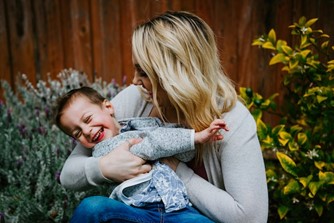Donna Amstutz is a licensed clinical psychologist, specializing in psychotherapeutic services for teens, adults, couples, and families. In the following article, Donna Amstutz reviews various attachment styles, characteristics, and how they influence adulthood.
The root of most adult relationships start with a ‘core-of-care’ experience from early childhood. This experience then develops into attachment styles, an emotional bond people develop as children from the care of their parents, often attributed to shaping adult relationships.
Donna Amstutz Reviews the History of Attachment Style
John Bowlby is often credited as being the founder of the concept of attachment styles. One of Bowlby’s students, Mary Ainsworth, expanded on his research with “Strange Situation”, a study that measures how a child reacts to the separation and reunion of their parents in various scenarios. From her research, Ainsworth concluded there were three major attachment styles: secure, ambivalent, and avoidant.
From here, other scientists have expanded their own studies on attachment styles. In 1986, Mary Main and Judith Solomon introduced the fourth attachment style: disorganized.
Donna Amstutz reviews more below on the four attachment styles and common characteristics of them.
The Four Attachment Styles
Like the threads that bind us together, these four unique styles unveil themselves, shaping the way we bond and relate with our partners. As we navigate this intricate terrain of attachment styles, we gain insights into the dynamics that shape our adult relationships, unraveling the intricacies that define the fabric of love and emotional bonds.
• Ambivalent
Donna Amstutz explains that children who display ambivalent attachment, otherwise known as preoccupied attachment, have a high fear of abandonment. These children may become highly distressed when separated from their parents. Even when the parents return, they are not comforted and may even be aggressive.
As an adult, this person may come off as nervous, clingy, and/or needy in their relationships. In romantic relationships, these people may be constantly anxious and worried that their partner does not love them or may leave them.
• Avoidant
Also known as the dismissive attachment style, children with an avoidant attachment have a high sense of independence. When their parents separate from them, these children do not appear distressed and do not seek the comfort of others.
Donna Amstutz notes that in an adult relationship, this may show up as being emotionally unavailable to their partners. People who have this attachment style may have difficulties expressing their feelings and may appear distant.
 • Disorganized
• Disorganized
Also known as the fearful-avoidant attachment style, children displaying disorganized characteristics may display confusion or fear in their relationships. This is due largely to the mixed caregiving by their parents. This may appear in children who are neglected or abused by their parents, showing a desire to be loved but also showing mistrust and fear of their caregiver.
Donna Amstutz explains that adults who grew up in such households struggle with developing close, intimate relationships. While there is a desire for intimacy, adults with this attachment struggle in trusting others and may push away others out of fear of getting hurt.
• Secure Attachment
While the previous three relationships focused on insecure relationships, a secure attachment style is the healthiest one. In early childhood, children with this attachment style are visibly upset when separated from their parents. However, different from the ambivalent attachment style, these children are genuinely happy and comforted when their parents return. This demonstrates a strong, trusted bond as well as dependability between the parent and child.
Donna Amstutz notes that adults with a secure attachment style are often characterized to develop long, healthy relationships. They often have high self-esteem and have an easier time connecting and trusting others.
From the research and studies of attachment styles, it is clear how important parental involvement and care may affect their children in their adult years. Below are some ways to build a secure attachment style.
Ways to Establish a Secure Attachment Between Parent and Child
• Build Trust and Reliability
Donna Amstutz reviews that in the three insecure attachment styles, lack of trust tends to be one of the biggest characteristics. For parents, being reliable is one of the most important ways to show their children that they can count on them for support and help.
• Develop Strong Communication
Communicating is key to any relationship, especially for children. Listening and acting on a child’s frustration or concerns allows the child to build trust with their parents. This would affect their adult relationships as these children would be more experienced in voicing their opinions instead of keeping them to themselves.
Additionally, parents also have a strong responsibility to communicate honestly with their children. For infants and toddlers, parents are unrealistically able to be by their side 24/7. However, rather than leaving without notice, parents should communicate with their children when they do have to leave and when they expect to be back. This will decrease anxious thoughts of abandonment and will increase trust in their parents when they do return.
• Positive and Negative Reinforcements
Donna Amstutz explains that when a child performs well, it’s important for parents to positively reinforce this behavior. This can help with the child’s self-esteem and contribute to a stronger bond between the parent and child.
When a child misbehaves, he or she should be properly reprimanded but not to the extent where the child feels abused or neglected. If a child fears their parents, they might develop a disorganized attachment style.
Conclusion
Understanding these four attachment styles and the influence it has on adult relationships can be empowering for change.
Whether someone is a new parent or just interested in learning how to better themselves, there are resources and ways to help develop a secure attachment style.








